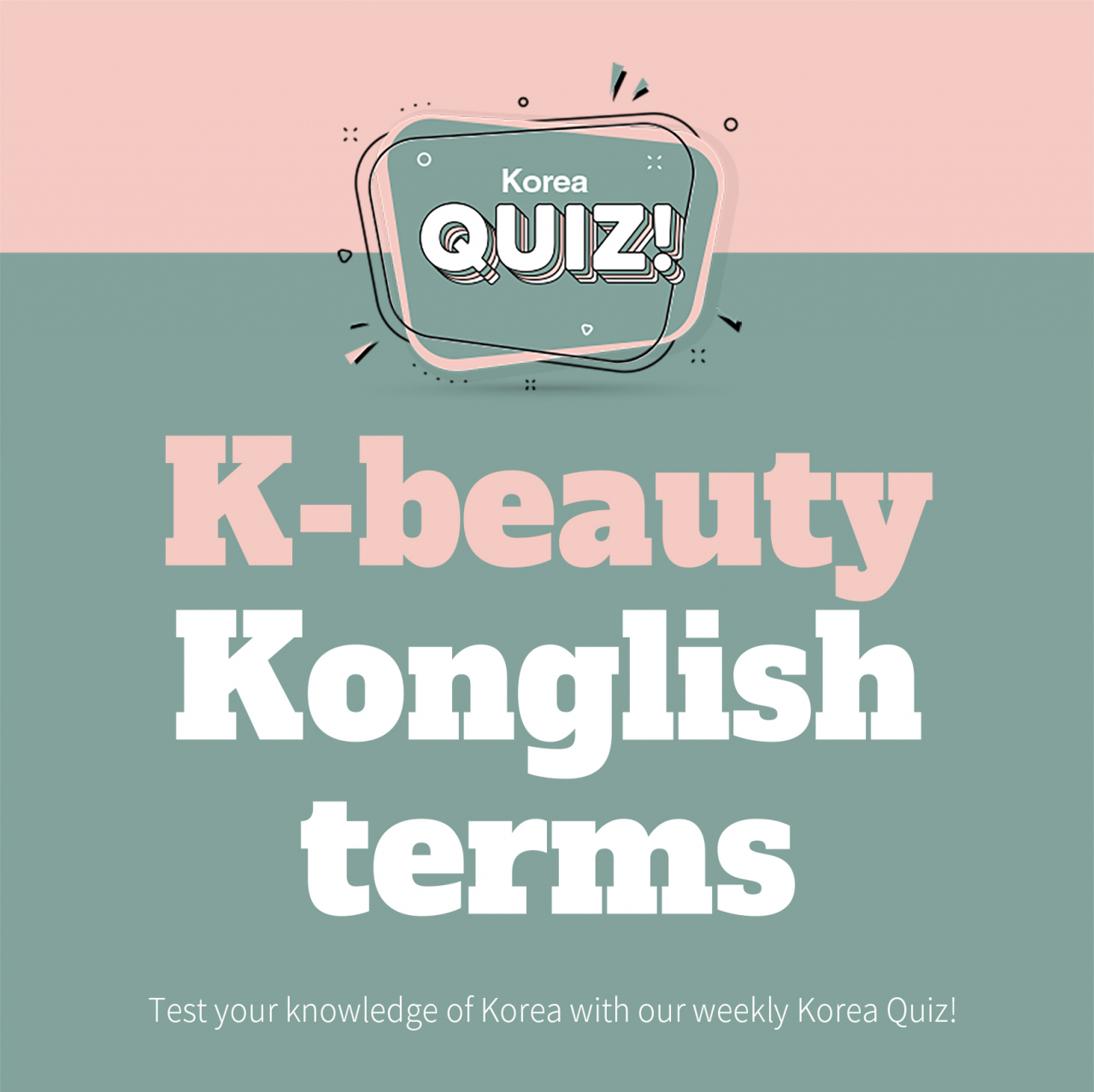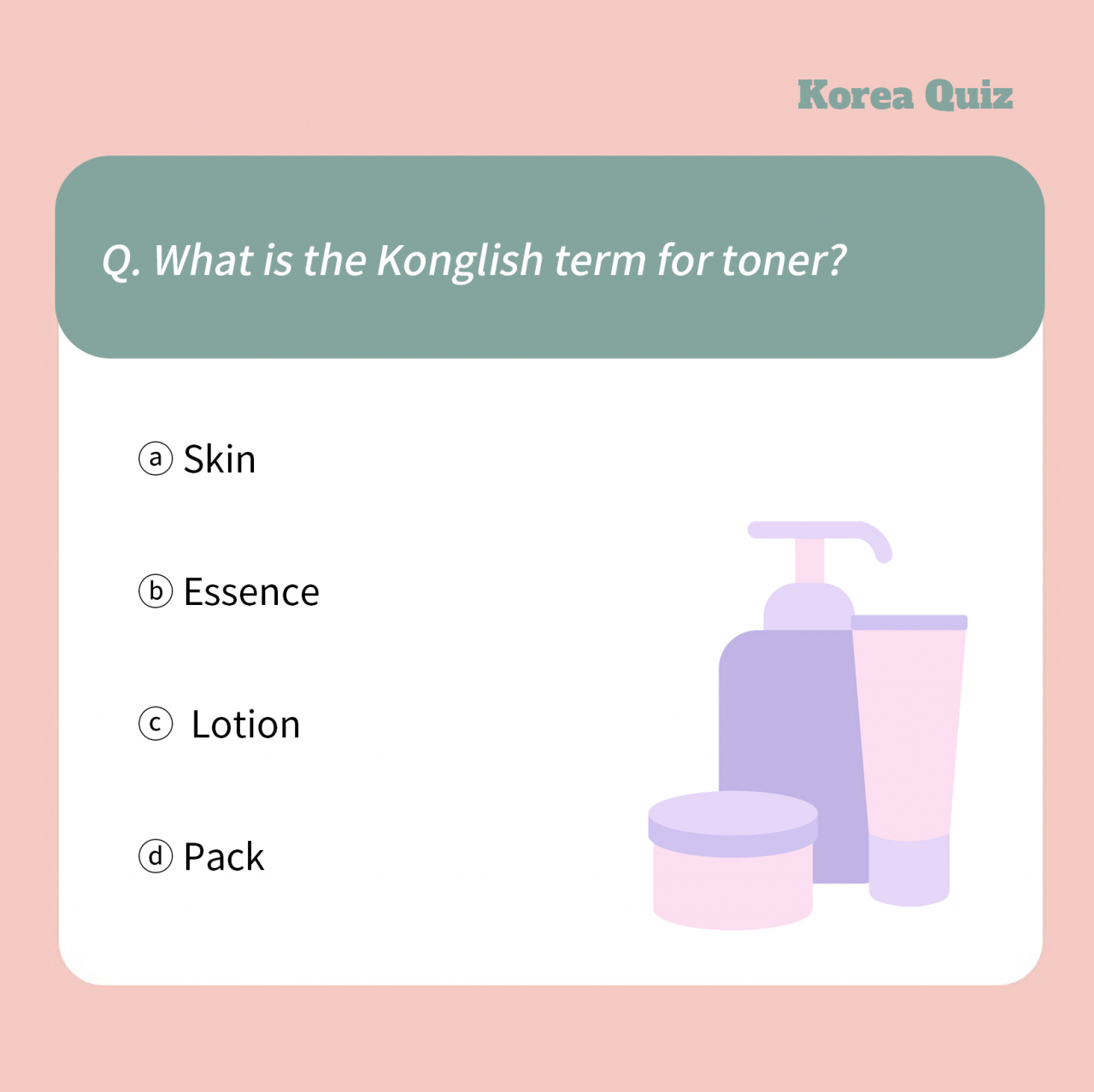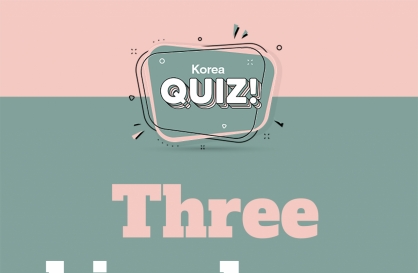Most Popular
Korea Quiz


Before K-beauty became an export industry targeting consumers globally, South Koreans had been using terms in Konglish -- in this sense, English loan words appropriated into Korean in ways that mean something different than their original meaning -- to describe certain products.
For starters, toners -- the liquid applied to the skin after cleansing and before moisturizing -- are commonly called “skin” in Korea. This can lead to somewhat baffling expressions in Korean like, "Your skin looks perfect. Which brand of ‘skin’ do you use?"
"Skin" is one of the four products that typically make up a basic skincare routine in the world of K-beauty, as idealized by marketers. The others are products that locals refer to as "essence," "lotion" and "cream." From ‘"skin" to "cream," this sequence is typically in order of the product's degree of creaminess.
"Essence" is a skincare category unique to K-beauty. It shares some similarities with serums as it typically comes in small containers and boasts properties such as moisturizing, anti-aging and skin-brightening. But compared to serums, essence products are more lightweight, closer to "skin" products in their watery consistency.
“Lotion,” referring to emulsion in Korean, are products typically of a milky consistency. “Cream” is the richest and thickest type of skincare product.
The four products are often found in pre-packaged sets, providing a complete basic care lineup for convenience. Of course, consumers have the freedom to choose which of the four to include in their skincare routine.
Occasionally, when there’s a need for something extra, South Koreans opt for what they call a “pack," or face mask. This term encompasses various types of masks such as peel-off masks, clay masks, wash-off type cream masks, and the famous Korean invention, sheet masks.
Although these Konglish terms are still widely used among Koreans, on product labels or commercials, K-beauty product names have come more in line with global standards to eliminate confusion.
Answer: (a)
-
Articles by Korea Herald









![[Graphic news] S. Korea's children get taller](http://res.heraldm.com/phpwas/restmb_idxmake.php?idx=644&simg=/content/image/2024/06/02/20240602050186_0.gif&u=)















![[Today’s K-pop] Kep1er vows to keep going with 1st LP](http://res.heraldm.com/phpwas/restmb_idxmake.php?idx=642&simg=/content/image/2024/06/03/20240603050651_0.jpg&u=)